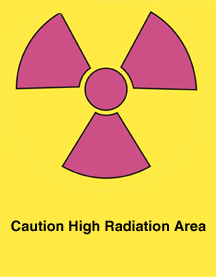
Prefixes
|
yotta (Y) |
1 000 000 000 000 000 000 000 000 |
1024 |
|
zetta (Z) |
1 000 000 000 000 000 000 000 |
1021 |
|
exa (E) |
1 000 000 000 000 000 000 |
1018 |
|
peta (P) |
1 000 000 000 000 000 |
1015 |
|
tera (T) |
1 000 000 000 000 |
1012 |
|
giga (G |
1 000 000 000 |
109 |
|
Mega (M) |
1 000 000 |
106 |
|
kilo (k) |
1 000 |
103 |
|
hecto (h) |
100 |
102 |
|
deca (da) |
10 |
101 |
|
1 |
1 |
1 |
|
deci (di) |
0.1 |
10-1 |
|
centi (c) |
0.01 |
10-2 |
|
milli (m) |
0.001 |
10-3 |
|
micro (µ) |
0.000 001 |
10-6 |
|
nano (n) |
0.000 000 001 |
10-9 |
|
pico (p) |
0.000 000 000 001 |
10-12 |
|
femto (f) |
0.000 000 000 000 001 |
10-15 |
|
alto (a) |
0.000 000 000 000 000 001 |
10-18 |
|
zepto (z) |
0.000 000 000 000 000 000 001 |
10-21 |
|
yocto (y) |
0.000 000 000 000 000 000 000 001 |
10-24 |
10 CFR Part 1 – Notices, Instructions And Reports To Workers: Inspection And Investigations
http://www.nrc.gov/reading-rm/doc-collections/cfr/part019/index.html
Comments regarding Part 19
10 CFR Part 20 – Standards For Protection Against Radiation
http://www.nrc.gov/reading-rm/doc-collections/cfr/part020/index.html
Comments regarding Part 20
Parts of Subpart A - General Provisions
| English Unit | SI Unit |
|
Roentgen (R) = 2.58 * 10^-4 C/kg (coulomb per kilogram) |
Coulomb/kg^-1 (C/kg) |
|
RAD = 1 erg/gm |
Gray (Gy) = 100 ergs |
|
RBE=Dose in rad to produce same effect with x or gamma ray/ |
none |
|
REM = RBE*RAD |
Sievert (Sv) = 100 REM |
|
Curie to Becquerel Conversion |
|
|
1 dps is one disintegration per second |
1 Becquerel (Bq) = 1 dps |
|
1 Curie (Ci) = 3.7 x 1010 dps |
37 GBq |
|
1 Ci = 2.2 x 1012 dpm (2.2 x 10) / 60 = 0.0367 or 3.67 x 10-2 |
37 GBq |
|
1 mCi |
37 MBq |
|
20 mCi (20 x 3.7 x 107 dps) = 74 x 107 = |
740 MBq or 0.74 GBq |
Subpart B - Radiation Protection Programs
Parts of Subpart C - Occupational Dose Limits
|
Annual Occupational Exposure Limits |
Dose – ENG |
Dose - SI |
|
Total Effective Dose Equivalent (TEDE) |
5 rem |
0.05 Sv |
|
Dose Equivalent to the Eye (LDE) |
15 rem |
0.15 Sv |
|
Shallow Dose Equivalent to skin, extremities (SDE) |
50 rem |
0.5 Sv |
|
TEDE to any other individual organ or |
50 rem | 0.5 Sv |
|
TEDE to embryo/fetus of declared pregnant woman |
0.5 rem |
0.005Sv |
|
Minors |
10% of an adult |
10% of an adult dose |
|
Members of the Public |
0.1 rem |
0.001 Sv |
|
Derived air concentration (DAC) and annual limit on intake (ALI) |
Part 20 Appendix B, Table 1 |
Part 20 Appendix B, Table 1 |
Parts of Subpart D - Radiation Dose Limits for Individual Members of the Public
Who should be monitored? (Regulatory Guide 8.7.C.1.2) Any individual who will exceed 10% of an applicable limit
No Parts to Subpart E - Radiological Criteria for License Termination
Part of Subpart F - Surveys and Monitoring
Subpart G - Control of Exposure From External Sources in Restricted Areas
No Parts of Subpart H - Respiratory Protection and Controls to Restrict Internal Exposure in Restricted Areas
Part of Subpart I - Storage and Control of Licensed Material
Parts of Subpart J - Precautionary Procedures

Appendix C to Part 20--Quantities of Licensed Material Requiring Labeling
Parts of Subpart L - Records
Subpart O Discusses Enforcement and Penalties
Medical Use Of Byproduct Material – 10 CFR 35
http://www.nrc.gov/reading-rm/doc-collections/cfr/part035/index.html
General technical requirements include, but not limited to:
It should be noted that in order to have a viable nuclear medicine facility there are two requirements that must be met:
Specific issues related to 10 CFR 35:
Subpart D--Unsealed Byproduct Material--Written Directive Not Required
35.100 Use of unsealed byproduct material for uptake, dilution, and excretion studies.
35.200 Use of unsealed by product material for imaging and localization studies.
Subpart E--Unsealed Byproduct Material--Written Directive Required
35.300 Use of unsealed by product material for therapeutic administration.
Subpart F--Manual Brachytherapy
35.400 Use of sources for brachytherapy.
Subpart G--Sealed Sources for Diagnosis
35.500 Use of sealed sources for diagnosis.
Subpart H--Photon Emitting Remote Afterloader Units, Teletherapy Units, and Gamma Stereotactic Radiosurgery Units
35.600 Use of a sealed source in a teletherapy unit.
All subparts are linked to Part 35 - scroll to the end of the document
Subpart J -- Training and Experience Requirements
Subpart L--Records
Subpart M--Reports
Subpart N--Enforcement
As you can see there are many requirements (laws) identified by the NRC when it comes to handling radiation! The rationale for all of this is to protect not just you, the radiation worker, but also the general public. Failure to comply with these rules and regulations may result in you or your facility to be fined and in extreme situations the penalty could include the inability to ever work in nuclear medicine or even time spent behind bars.
Always consider proper and safe radiation practices wherever you work, your loved ones depend on it!
Return to the beginning of the document
Return to the table of Contents